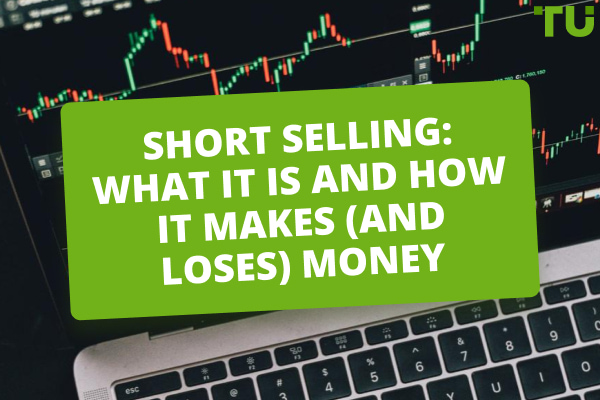What Is Crypto Arbitrage?
Crypto arbitrage is a trading strategy that takes advantage of price discrepancies of the same cryptocurrency across different exchanges. Essentially, it involves buying a cryptocurrency at a lower price on one exchange and selling it at a higher price on another exchange, pocketing the difference as profit.
The world of cryptocurrency is constantly evolving, with new opportunities emerging for investors and traders. One such opportunity is crypto arbitrage trading, a strategy that capitalizes on price discrepancies of the same cryptocurrency.
Start trading cryptocurrencies with ByBitHow does crypto arbitrage work?
The basic principle of crypto arbitrage is simple: buy low, sell high. However, the execution can be quite complex. Here's a breakdown of the process.
The first step is to identify price discrepancies between different exchanges. This can be done manually by monitoring prices on different exchange websites or by using automated tools such as crypto arbitrage scanners.
For manual order placement, traders manually place buy and sell orders on different exchanges, requiring constant vigilance and quick reflexes. Traders actively track prices across various platforms, utilizing tools and alerts to identify potential opportunities. Traders assess risks, evaluate profitability, and make trading decisions based on their analysis and experience.
With automatic execution, pre-programmed software (a trading bot) automatically identifies and executes arbitrage opportunities based on predefined parameters.
These bots connect to exchange APIs, enabling real-time order placement and execution. And trading decisions are made based on mathematical algorithms and technical indicators.
And then finally, the difference between the buying and selling price is the trader’s profit.
Best cryptocurrency exchanges
Types of crypto arbitrage
The three main types of crypto arbitrage strategies are summarized below
Spatial arbitrage
Spatial arbitrage capitalizes on price discrepancies for the same cryptocurrency across different exchanges located in various geographical regions. This strategy leverages the inherent inefficiencies in global cryptocurrency markets, where information and price adjustments may not occur instantaneously across all platforms.
With this method, traders must first identify a pricing gap or price discrepancy. That is, traders actively monitor real-time cryptocurrency prices across numerous exchange platforms, searching for discrepancies. These discrepancies can arise due to several factors including:
-
Local market demand and supply dynamics.
-
Regulatory differences across jurisdictions.
-
Variations in exchange fees and liquidity levels.
-
Time zone-based differences in information flow.
Traders must then capitalize on this identified opportunity. Once a price discrepancy is identified, the trader must act swiftly. They purchase the cryptocurrency at the exchange with the lower price (e.g., Exchange A) and simultaneously sell it at the exchange with the higher price (e.g., Exchange B).
The result is that traders profit from the pricing difference. The difference between the two prices, often referred to as the "spread", represents the trader's profit. This profit can be significant, depending on the size of the initial investment and the magnitude of the price discrepancy.
Here is an example. Imagine Bitcoin is priced at $20,000 on Exchange A located in the United States and $20,100 on Exchange B located in Europe. A trader identifies this opportunity and quickly purchases 1 Bitcoin for $20,000 on Exchange A. Immediately, they transfer the Bitcoin to Exchange B and sell it for $20,100. This swift action allows them to pocket a $100 profit on their single Bitcoin trade.
Triangular arbitrage
Triangular arbitrage, a pseudo sophisticated trading strategy, capitalizes on price inefficiencies by exploiting the interlinked exchange rates of three different cryptocurrencies. It involves buying and selling these cryptocurrencies in a specific sequence to generate profit from the discrepancies in their cross-rates.
Here is how it works.
Traders identify a triangular opportunity. Traders diligently analyze the cross-rates of various cryptocurrencies, searching for situations where the exchange rate between two currencies does not match the implied rate derived by calculating through a third currency (usually a stablecoin).
Traders then must execute a loop. Once a triangular arbitrage opportunity is identified, the trader executes a sequence of trades.
Here is how such a trade might look.
-
Buy the undervalued cryptocurrency (Currency A) using a stablecoin or another readily available asset.
-
Sell Currency A for the second undervalued currency (Currency B).
-
Sell Currency B for the overvalued currency (Currency C).
-
Sell Currency C back to the stablecoin or initial asset, completing the loop.
The trader's profit arises from the combined difference in the exchange rates for each leg of the triangular trade. This profit can be significant, especially when magnified by the volume of the trade.
For example, a triangular arbitrage opportunity existed across the following three cryptocurrency pairs:
-
BTC/USDT: Bitcoin (BTC) to Tether (USDT)
-
ETH/USDT: Ethereum (ETH) to Tether (USDT)
-
BTC/ETH: Bitcoin (BTC) to Ethereum (ETH)
Let's assume you start with 1 BTC. At the time, the BTC/USDT exchange rate was approximately $20,000. So, by converting your 1 BTC to USDT, you would have:
1 BTC * $20,000/BTC = $20,000 USDT
The ETH/USDT exchange rate at the time was around 900 USDT/ETH. Therefore, you could convert your $20,000 USDT to ETH:
$20,000 USDT * 1 ETH/$900 USDT = 22.22 ETH
Finally, the BTC/ETH exchange rate was approximately 0.05 BTC/ETH. By converting your 22.22 ETH back to BTC, you would have:
22.22 ETH * 0.05 BTC/ETH = 1.11 BTC
Profit calculation:
Initially, you started with 1 BTC. After completing the triangular arbitrage cycle, you ended up with 1.11 BTC, effectively acquiring 0.11 BTC in profit.
Market making arbitrage
Market making arbitrage actively participates in shaping the market to extract profit. It involves placing buy and sell orders on different exchanges for the same cryptocurrency, creating a market and capitalizing on the resulting bid-ask spread.
With this method, traders meticulously analyze the order book of different exchanges, identifying imbalances between buy and sell orders.
Based on the analysis, traders place two types of orders on different exchanges:
-
Limit buy orders. These orders buy the cryptocurrency at a slightly higher price than the current best bid on another exchange.
-
Limit sell orders. These orders sell the cryptocurrency at a slightly lower price than the current best ask on another exchange.
By creating a market and facilitating trades, the trader earns the difference between the buy and sell orders, known as the bid-ask spread.
For example, imagine Ethereum is trading on Exchange A at a bid of $1,200 and an ask of $1,210. On Exchange B, the bid is $1,190 and the ask is $1,200.
A market making arbitrageur can:
-
Place a limit buy order for Ethereum on Exchange A at $1,205.
-
Place a limit sell order for Ethereum on Exchange B at $1,195.
If a trade occurs on either exchange, the arbitrageur earns a profit of $5 on each Ethereum.
Market making arbitrage necessitates a deep understanding of market dynamics and technical expertise:
-
The trader needs to interpret the order book depth and predict potential trading activity.
-
The buy and sell orders need to be priced strategically to attract trades without incurring losses.
-
Large orders can influence market prices, requiring careful monitoring and adjustments to avoid adverse effects.
Advantages of crypto arbitrage trading
There are several advantages to crypto arbitrage trading.
-
Since arbitrage involves buying and selling the same asset within a short timeframe, the risk of price volatility is significantly reduced. This makes it a relatively safer option compared to holding volatile cryptocurrencies over extended periods.
-
Crypto arbitrage opportunities can yield significant profits, particularly for traders who can identify and act on discrepancies quickly. The profit margins can be substantial, especially when dealing with large volumes of cryptocurrency.
-
Automated trading bots can be programmed to identify and exploit fleeting arbitrage opportunities around the clock. This allows traders to generate passive income without actively monitoring the market.
-
By engaging in arbitrage across different cryptocurrencies and exchanges, traders can diversify their portfolio and mitigate risks associated with individual asset fluctuations. This allows for a more balanced and resilient investment strategy.
Challenges of crypto arbitrage
While crypto arbitrage offers several advantages, it also presents several challenges that traders need to be aware of:
-
Crypto markets are becoming increasingly efficient, making it harder to find profitable arbitrage opportunities. As more traders and bots enter the market, price discrepancies are quickly identified and exploited, leaving less room for significant profits.
-
Trading fees on exchanges can eat into profits, especially for small arbitrage opportunities. High fees can significantly reduce the profitability of trades, making it essential to choose exchanges with competitive fee structures.
-
The success of crypto arbitrage relies on quick execution. This requires efficient trading platforms, technical skills, and the ability to react quickly to fleeting opportunities. Delays or technical issues can significantly impact profits.
-
The regulatory landscape surrounding cryptocurrencies is constantly evolving. Emerging regulations can impact arbitrage strategies and potentially limit access to certain exchanges or trading activities.
Conclusion
Crypto arbitrage trading can be a lucrative strategy for experienced traders. However, it's important to consider the challenges and limitations of this strategy before engaging in any trading activities. By carefully considering the risks and rewards and doing your research, you can increase your chances of success in the world of crypto arbitrage trading.
Glossary for novice traders
-
1
Crypto trading
Crypto trading involves the buying and selling of cryptocurrencies, such as Bitcoin, Ethereum, or other digital assets, with the aim of making a profit from price fluctuations.
-
2
Volatility
Volatility refers to the degree of variation or fluctuation in the price or value of a financial asset, such as stocks, bonds, or cryptocurrencies, over a period of time. Higher volatility indicates that an asset's price is experiencing more significant and rapid price swings, while lower volatility suggests relatively stable and gradual price movements.
-
3
Ethereum
Ethereum is a decentralized blockchain platform and cryptocurrency that was proposed by Vitalik Buterin in late 2013 and development began in early 2014. It was designed as a versatile platform for creating decentralized applications (DApps) and smart contracts.
-
4
Yield
Yield refers to the earnings or income derived from an investment. It mirrors the returns generated by owning assets such as stocks, bonds, or other financial instruments.
-
5
Leverage
Forex leverage is a tool enabling traders to control larger positions with a relatively small amount of capital, amplifying potential profits and losses based on the chosen leverage ratio.
Team that worked on the article
Thomas Wettermann is an experienced writer and a contributor to the Traders Union website. Over the last 30 years, he has written posts, articles, tutorials, and publications on several different high tech, health, and financial technologies, including FinTech, Forex trading, cryptocurrencies, metaverses, blockchain, NFTs and more. He is also an active Discord and Crypto Twitter user and content producer.
Dr. BJ Johnson is a PhD in English Language and an editor with over 15 years of experience. He earned his degree in English Language in the U.S and the UK. In 2020, Dr. Johnson joined the Traders Union team. Since then, he has created over 100 exclusive articles and edited over 300 articles of other authors.
Mirjan Hipolito is a journalist and news editor at Traders Union. She is an expert crypto writer with five years of experience in the financial markets. Her specialties are daily market news, price predictions, and Initial Coin Offerings (ICO).













